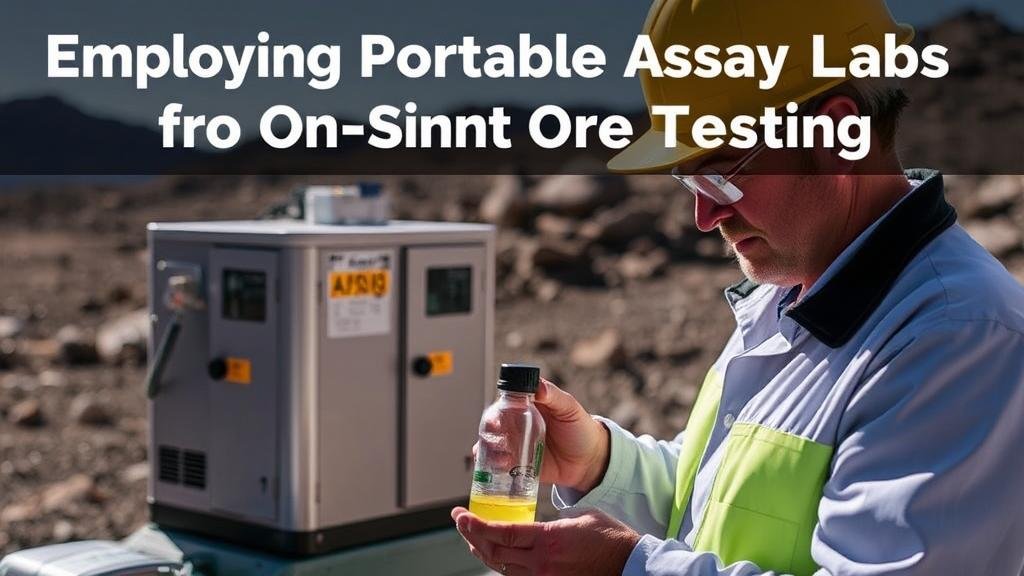Employing Portable Assay Labs for On-Site Ore Testing
Employing Portable Assay Labs for On-Site Ore Testing
In the mining and mineral exploration sectors, the ability to conduct accurate and timely ore testing is crucial. Portable assay labs have emerged as a transformative solution, enabling on-site testing that significantly enhances operational efficiency. This article delves into the advantages, methodologies, and developments surrounding portable assay labs, illustrating their impact on the mining industry.
The Significance of On-Site Ore Testing
On-site ore testing provides immediate data concerning the mineral composition of geological samples. This immediacy allows for real-time decision-making regarding resource allocation, environmental compliance, and economic feasibility. Traditional assay processes can be both time-consuming and costly, often delaying critical operations. In contrast, portable assay labs provide rapid testing, leading to:
- Increased operational efficiency
- Reduced transportation costs
- Timely resource evaluation
Technological Advancements in Portable Assay Labs
Recent advances in analytical technologies such as X-ray fluorescence (XRF), atomic absorption spectroscopy (AAS), and portable mass spectrometry have revolutionized portable assay labs. For example, XRF analyzers have become prominent for their capability to determine elemental concentrations quickly and accurately. These analyzers are compact, battery-operated, and can deliver results in a matter of minutes, which streamlines the testing process significantly.
According to a report from the Global Mining Guidelines Group, the adoption of portable assay technologies has improved return on investment (ROI) by up to 30% in some mining operations due to reduced downtime and faster decision-making capabilities.
Case Studies on Portable Assay Labs
Several mining companies have successfully implemented portable assay labs, allowing them to illustrate the benefits effectively. For example, a gold mining operation in Nevada utilized portable XRF technology to conduct real-time analysis of ore samples. As a result, the company reduced its assay turnaround time from several weeks to just hours. This rapid feedback enabled them to maximize their yield from high-grade ore deposits and minimize waste.
Another notable case is that of a lithium exploration company in Australia, which employed a portable AAS unit to assess water quality. The devices mobility allowed them to conduct tests across different locations quickly, ensuring compliance with environmental regulations while making necessary adjustments to their extraction processes.
Challenges and Considerations
While the benefits of portable assay labs are substantial, they are not without their challenges. One significant concern is the potential for variability in results due to sample preparation techniques and the inherent limitations of portable devices compared to traditional laboratory setups. Proper calibration, sample handling, and trained personnel are critical for ensuring data accuracy. Stakeholders must address these issues proactively to maintain the integrity of the results.
- Ensure consistency in sample collection methods
- Invest in training for personnel operating these devices
- Regularly calibrate and maintain equipment
Future Perspectives
The future of portable assay labs looks promising as technological advances continue to enhance their capabilities. Emerging technologies, including miniaturized analytical systems and artificial intelligence (AI) integration, are expected to further optimize on-site testing processes. Companies that adopt these tools can position themselves competitively in the market, capitalizing on faster, more accurate analytics.
Actionable Takeaways
Employing portable assay labs can provide significant advantages in the mining sector. To maximize the benefits of these technologies, organizations should:
- Explore the integration of portable assay labs into existing workflows.
- Invest in training and development for personnel on the use and maintenance of portable equipment.
- Maintain a regular schedule for equipment calibration to ensure data accuracy.
- Continuously monitor advancements in assay technology for potential upgrades.
To wrap up, portable assay labs are reshaping the landscape of on-site ore testing, thus bolstering operational efficiency and decision-making. By understanding their uses, challenges, and future potential, stakeholders can harness these tools to enhance their mining operations.



